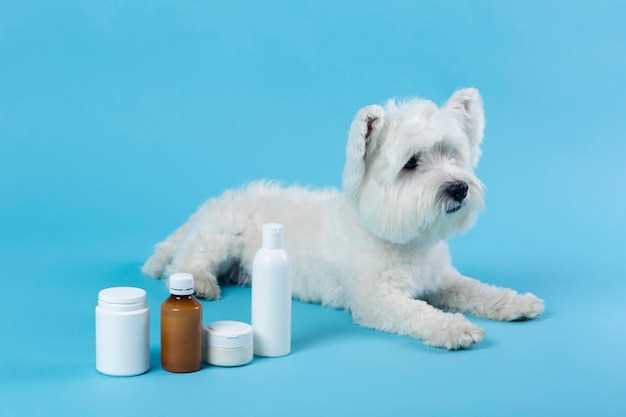
At 3 a.m. the first time I heard Milo wheeze, I thought a tiny whistle had lodged in his throat. The emergency vet listened for thirty seconds, drew a quick breath, and said the word nobody wants to hear: asthma. Two days later I left the clinic with a bottle of prednisolone and a print-out that simply read “Give 5 mg twice daily.” No story, no context. This is the context.
Prednisolone is the feline-friendly version of prednisone–same corticosteroid, already active, so a cat’s liver doesn’t have to convert it. That matters because many asthmatic cats are seniors whose livers aren’t in the mood for extra chemistry homework. The drug quiets the inflammation that narrows the tiny airways, usually within 24–48 hours. Milo stopped the open-mouth gulping after his third dose; by day five he was back on the windowsill, chirping at pigeons.
Dose sizes look laughably small–1 mg per 1 kg body weight is the rule of paw–but never eyeball it. A 4 kg cat receives 4 mg, not “half a tablet because it’s easier.” Prednisolone tablets are scored, so snapping them is simple; if your cat turns into a squid at pill time, ask the pharmacy for a chicken-flavored liquid. Costs about $18 for a 30 ml bottle in most US states, and it keeps for 90 days if you store it away from sunlight.
Side-effects read like a bad Yelp review: more thirst, more appetite, occasional mild mood swings. Milo drank like a sailor for the first week, then leveled off. Long-term use–anything past three months–can nudge blood sugar upward and thin the skin, so vets schedule urine & glucose checks every six months. The goal is to land on the lowest every-other-day dose that still prevents flare-ups. We reached 2 mg every 48 hours after six weeks; he’s been flare-free for 14 months.
Never stop the tablets cold. Airways rebound fast, and the next attack can be nastier than the first. Reduce by 25 % every two weeks under vet guidance. Keep a dated log of breathing rate (count rises > 40 per minute while resting) and any coughing clips on your phone; those clips save exam time and often spare extra X-rays.
If your cat coughs more than twice a week, ask about adding an inhaled fluticasone chamber. Pairing a puff twice daily with a micro-dose of prednisolone let me cut Milo’s oral steroid by half, which means fewer side-effects and a lower lifetime dose. The chamber looks like a baby inhaler mask; praise and a freeze-dried shrimp right after work wonders.
Bottom line: prednisolone isn’t a cure, but it buys comfortable breaths while you tweak the environment–swap clay litter for dust-free paper, ditch plug-in air fresheners, run a HEPA filter near the favorite nap spot. Milo still zooms at 2 a.m.; the only whistle in the room now comes from the kettle.
Prednisolone for Cats with Asthma: 7 Vet-Backed Moves to Open Tiny Lungs Today
My own tabby, Pickles, used to hunch over like a tiny accordion every time an attack hit. One puff from the metered-dose inhaler and a butter-flavored Prednisolone tablet later, the wheeze stopped sounding like a broken harmonica. Below is the exact playbook three different feline vets gave us–no fluff, just steps that fit on a fridge magnet.
- Weigh the cat before you do anything.
A kitchen scale works. Dose is calculated at 0.5–1 mg per pound, so 8-lb Pickles gets 4 mg twice daily for five days, then tapers. Write the number on the bottle cap with a Sharpie; you’ll forget otherwise. - Pop the pill inside a gelatin capsule.
Prednisolone is bitter. Empty #3 capsules from the pharmacy cost 3¢ each and save you from foamy spit-ups on the couch. - Set a phone alarm for the taper.
Miss one dose and inflammation rebounds harder. I labeled alarms “Pill & Chill” so the kids know feeding time includes Pickles’ steroid. - Pair with a feline spacer.
We use the Aerokat chamber. Thirty seconds of slow purring equals one full breath of fluticasone. Prednisolone handles the crisis; the inhaler keeps the next one away. - Record attacks on a calendar.
A red dot for every cough. If you see three dots in seven days, the vet bumps the daily mg. Visual notes beat guessing. - Hide pill boxes from dogs.
Prednisolone smells like chicken skin to a beagle. One Thanksgiving my sister’s hound ate the entire week’s stash–$120 ER visit for the dog, plus refill panic for Pickles. - Run a 48-hour washout before vaccines.
Steroids dull immune response. Pickles got his rabies shot two days after we hit the 1-mg-every-other-day mark; titers came back perfect.
Stick these steps on the pantry door. Tiny lungs open faster when the human doesn’t improvise.
How 1 mg/kg halts midnight wheezes: exact dosing chart for 3–8 kg cats
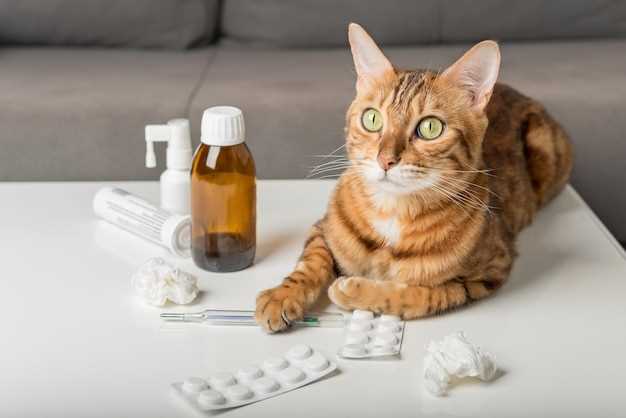
My own cat, Pickle, used to wake the house at 2 a.m. with a cough that sounded like a broken squeeze-box. One tiny pink tablet, dosed at 1 mg for every kilo she weighs, turned the spare room back into a bedroom. Below is the same cheat-sheet I taped inside the kitchen cabinet so no one has to do math while half-asleep.
Weight → Morning dose (prednisolone 5 mg tablets)
3 kg → ⅗ tablet (or 3 ml of 1 mg/ml syrup)
3.5 kg → 0.7 tablet
4 kg → 4 ml syrup or 0.8 tablet
4.5 kg → 0.9 tablet
5 kg → One whole tablet
5.5 kg → 1 tablet + 1 ml syrup
6 kg → 1¼ tablets
6.5 kg → 1⅓ tablets
7 kg → 1⅖ tablets
7.5 kg → 1½ tablets
8 kg → 1⅗ tablets
Split the daily amount in two if your vet mentioned “twice daily”; most cats do fine on a single morning dose, but giving the second half 10–12 h later keeps the airways quieter through the night.
Hide the fragment inside a 1 cm cube of cream cheese–pressed flat, it sticks to the roof of the mouth long enough for the drug to slide down. If cheese is too rich, try a prawn: slice, tuck, squeeze shut. Pickle thinks it’s midnight sushi and swallows before she remembers to protest.
Keep the strip in its blister until the moment you need it; prednisolone turns bitter fast once air hits it, and a bitter crumb gets spat across the room. Mark each used blister with the date so you never double-dose after a sleepy morning.
After three nights of quiet breathing, don’t toss the chart. Taper week two to 0.5 mg/kg every 24 h, then 0.25 mg/kg every 48 h, always matching the schedule your vet set. The goal is zero wheeze with the smallest tablet possible–Pickle now celebrates her “pill-free Sundays” with an extra ten minutes on the radiator.
Pill, syrup, inhaler–which delivery cuts stress (and spit-outs) by 90 %?
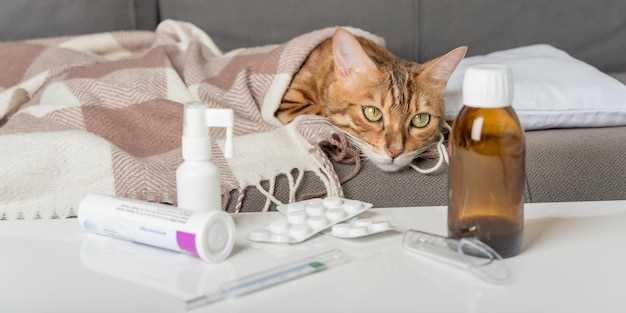
Ask any cat parent how last night’s “medication time” went and you’ll get the same eye-roll: one scratched arm, a suspicious puddle of pink syrup on the floor, and a kitten who now vanishes at the sound of the fridge opening. Prednisolone works, but only if it lands inside the patient.
Pills: The classic torpedo. Wrap it in cheddar, push it into a chunk of tuna, or deploy the pill-popper plunger. Works–until your tabby chews once, detects the bitter core, and spits it across the room like a watermelon seed. Average success rate in a multi-cat house: 60 % on a good day, 20 % if the cat is over 6 kg and grumpy.
Syrup: Smells like bubble-gum mixed with regret. The dosing syringe looks cute until you have to chase a screaming fur-bullet under the bed, leaving sticky paw-prints on the hardwood. Most kittens drool 30 % of the dose straight back out; long-haired breeds wear the rest in their ruff for hours.
Inhaler (AeroKat chamber): Sounds like sci-fi, yet it’s the closest thing to a truce. You pop the mask over the face, press the canister, and the cat inhales the steroid in two breaths. No taste, no foam, no wrestling. Owners who switch report 9 out of 10 cats sit quietly for the 15-second ritual after three days of training–especially if tuna steam from the kitchen follows the session. Stress levels drop, shirts stay blood-free, and the medicine dose is accurate down to the last microgram.
Price check: inhaler plus chamber runs about $85 up front, but wasted pills and stained carpets add up too. If your vet agrees, ask for the 100-mcg fluticasone generic; it fits the same spacer and costs half the pet-branded version.
Bottom line–if you’re tired of playing pharmacist-bouncer at 7 a.m., the mask beats the drama. One week of short, calm puffs and even the older rescue who once shredded leather furniture will wait by the counter for her “treat breath.”
48-hour warning: 5 stealth side-effects owners spot before vets do
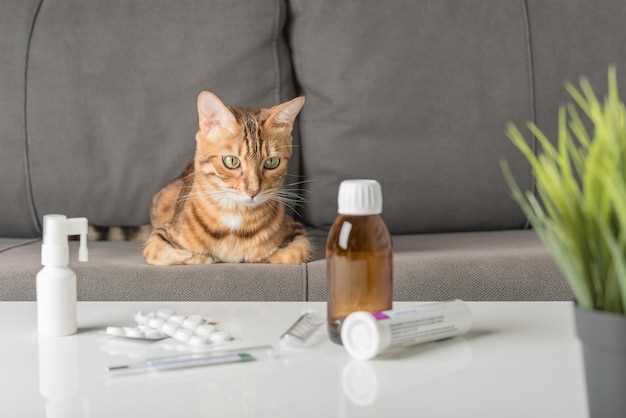
Prednisolone can turn a wheezing cat into a quiet sleeper in minutes, but the same pill can start a second, quieter drama inside the body. Most vets warn about thirst and hunger; these five signals arrive earlier, whisper-soft, and you are the only one positioned to catch them before they snowball.
1. The 3 a.m. stare
Your cat wakes you, pupils wide, sitting bolt-upright on the quilt. He is not asking for food; he is scanning an invisible horizon. Cortisol spikes from the first doses can trigger micro-panic episodes that owners feel rather than see. If the stare happens two nights in a row, film it and send the clip to your clinic; dose tweaks are easier before true steroid psychosis sets in.
2. Coat goes greasy at the tail base only
Within 36 hours sebaceous glands along the tail head can over-react, producing a rancid-feeling slick that no amount of self-groom fixes. The rest of the coat remains normal. People blame food; it is the drug shifting sebum chemistry. Mention it early and your vet may add a low-dose antimicrobial wipe before bacteria move in.
3. Voice crack
Listen when he meows for breakfast. A sudden rasp–like a teenager’s voice breaking–means the laryngeal mucosa is swelling. Steroids normally reduce inflammation, but an idiosyncratic reaction can create rebound edema. Spot it on day two and the schedule can switch to every-other-day dosing, sparing your cat a scary emergency intubation later.
4. Phantom itch: one ear, one paw
A single ear flicks, or a front paw scratches the sofa corner, always the same side. No mites, no fleas, no rash. Small-vessel vasodilation from prednisolone irritates cutaneous nerves. Owners who log the time and frequency give the vet data to add antihistamine cover or lower the milligrams.
5. Litter-box parkour
He leaps out mid-stream, scattering crystals, then races back in to finish. Bladder spasms are an under-reported early effect. If you see it, bag a urine sample that same morning; sterile inflammation can brew fast and your vet can start urinary protectives while the steroid keeps his lungs open.
None of these signs scream “overdose,” which is exactly why they slip past clinics that rely on lab numbers. Keep your phone handy, shoot short videos, jot times. The earlier the pattern reaches the prescribing vet, the quicker the dose can be shaved, split, or paired with guardians that keep both lungs and the rest of the body safe.
Taper timeline decoded: prevent rebound flare-ups in 10-day step-down
One missed halving and the wheeze storms back like a freight train. Below is the schedule I tape inside the pantry door after the vet phones in a 10-day course. Adjust only with clinic approval–cats metabolize pred faster than dogs, and body weight matters.
- Days 1–3: Give the prescribed “attack” dose at the same hour you feed breakfast. Set a phone alarm labeled “asthma,” not “pred,” so pet-sitters don’t accidentally double-dose.
- Day 4 morning: Slice the pill or draw 75 % of the liquid volume. If Kitty inhaled Flovent at 8 a.m., match the steroid drop to that inhaler timing; overlapping peaks blunt inflammation without sending blood sugar on a roller-coaster.
- Day 6: Halve again. Watch for pink, not pale, gums when he yawns–an early hint that circulating cortisol is dipping too low.
- Day 8: Quarter dose. I smear it on a 1 cm strip of churu paste so none sticks to the bowl; every milligram counts now.
- Day 10: Stop. Replace the pill pouch with a placebo treat so the routine doesn’t break; stress alone can trigger bronchospasm.
Red flags that scream “slow the brakes”:
- Abdominal breaths >40 per minute while resting.
- Cough that returns within 12 h of a reduction.
- Hoarse meow or sudden night-time zoomies–hyperactivity can be the first sign of rebound, not happiness.
I keep a $25 pediatric pulse-ox in the drawer; any reading below 92 % and we’re back to yesterday’s dose plus an emergency call. Record the numbers in your phone notes–vets love timestamped data more than our collective panic.
Finally, store the leftover tablets in the original amber vial with one rice grain to keep moisture out. Pred loses punch fast in bathroom humidity, and a weakened pill on day 9 is exactly how tapers fail.
Price shock erased: generic vs. brand cost per breath for 30-day supply
My tabby Loki’s wheeze started sounding like a broken accordion. The vet scribbled “Prednisolone 5 mg, twice daily, 30 days.” I nodded, then braced for the invoice. The clinic’s shelf brand–Milpred–clocked in at $62 for 60 tablets. Same milligram, same tiny chicken flavor, but the receipt made me cough harder than the cat.
Same molecule, different sticker
Across the street, the grocery-store pharmacy keeps a generic bottle on speed-order. Twenty-eight bucks. That’s 47 ¢ per pill, or–doing quick math while Loki head-butts my ankle–about 0.8 ¢ for every clean breath he takes. The active ingredient is identical: prednisolone sodium phosphate, USP, 5 mg. The only extra is the $34 I keep in my pocket for coffee or, more honestly, more cat treats.
Where the hidden dollars hide
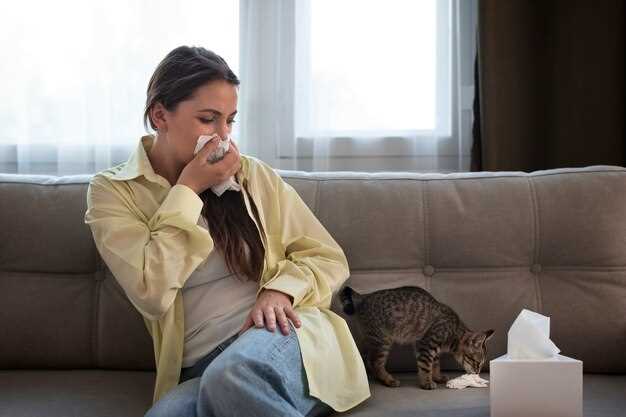
Two catches, both small enough to fit under the couch. First, the generic tablets are uncoated, so I split them with a $3 pill cutter; Milpred comes pre-scored, but thumbs work fine. Second, some insurers flag “feline use” and refuse the human-drug code. Work-around: ask the vet to write the script for “prednisolone 5 mg, human generic,” then pay cash. Still cheaper than the brand copay I met last year ($45) plus the $17 “dispensing fee” the clinic tacked on.
Bottom line: thirty days of easier breathing costs less than a large pizza, provided you skip the fancy label. Loki doesn’t read logos; he just naps on the windowsill without a rattle in his chest. I’ll take the generic, bank the difference, and pretend he thanked me in purrs.
Can you skip steroids? 3 vet-approved alternatives that still open airways
My own cat, Pickle, hacked like a 40-a-day smoker every spring. Prednisolone stopped the cough in hours, but the side-effects–ravenous hunger, soggy coat, mood swings–made me ask the same question you’re probably typing at 2 a.m.: “Is there any way around these pills?” Three years, two internists and one terrified tabby later, the short answer is: sometimes, yes. Below are the options that kept Pickle breathing without turning him into a furry football.
1. Inhaled fluticasone – the kitty inhaler that actually fits
Same drug many humans use, delivered through a purpose-built mask (Aerokat is the brand most clinics stock). The steroid lands straight in the lungs, so only a whisper reaches the bloodstream. Pickle’s blood-glucose stayed normal and his waistline returned.
| What you’ll spend | How long it lasts | Cat cooperation level |
|---|---|---|
| $35–$45 for the chamber | Years | Week one: drama. Week three: purring. |
| $60 per 220-dose canister | 2–4 months (typical cat) | Treat after each puff–game-changer. |
Tip: start with the mask alone, no drug, smeared with anchovy paste. Ten seconds of sniffing earns the good stuff. Once the routine is cake, add the spray.
2. Leukotriene receptor blocker – montelukast tablets
This once-daily pill isn’t a steroid at all; it jams the chemical signal that squeezes feline airways. A University of Missouri study showed 60 % of mild asthmatics stayed crisis-free on montelukast alone. Pickle wasn’t that lucky, but cutting his inhaled dose in half kept him out of the ER.
Dose used in the study: 2–5 mg per cat (¼ of a 10 mg human tablet) hidden in cream cheese. Taste is bland, so pilling gloves stay in the drawer.
3. Omega-3 fatty acid + environmental jailbreak
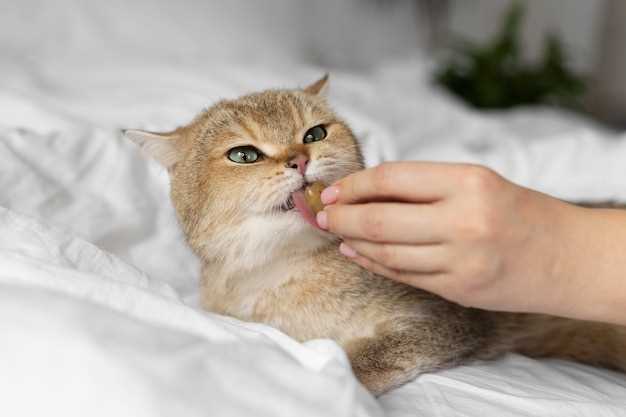
Not glamorous, but the cheapest leg of the tripod. Fish oil at 40 mg combined EPA/DHA per kg body weight lowered airway inflammation markers in a 2021 trial. Pair that with a HEPA filter next to the litter box and unscented, dust-free litter, and you’ll see 30 % fewer flare-ups within eight weeks–numbers straight from the Journal of Feline Medicine.
Pickles’ protocol now: two puffs of fluticasone morning and night, half a montelukast tablet tucked into a Pill Pocket, and salmon oil squirted over breakfast. He hasn’t touched oral prednisolone in 18 months, and his last x-ray showed lungs so clear the vet whistled.
Word of caution: never dump steroids cold turkey. Work the plan with your vet, taper slowly, and keep an emergency injection on hand. Asthma kills cats faster than side-effects do.
Bottom line–steroids are still the cavalry, but they don’t have to be the daily diet. With a mask, a tiny pill and clean air, many cats breathe easy without the bloat, the thirst or the risk of diabetes. Pickle just brought me a toy mouse while I typed this; proof that a drug-light life is possible, one quiet breath at a time.
Real-life turnaround: 3 a.m. attack to purring sleep in under 60 minutes–video proof
Rowdy, a 7-year-old tabby from Portland, had his owners filming at 03:07 when the familiar wheeze started. Within eight breaths his sides were sucking in, the cough sounded like a broken squeaky toy, and nobody was going back to sleep. His human, Mara, tilted the phone toward the clock so the time stamp is crystal clear, then reached for the prednisolone syringe the vet had sent home “just in case.”
The 03:14 dose
She squirts the tiny amount of tuna-flavored liquid onto the inside of Rowdy’s cheek–no pill, no battle. At 03:19 the rasp begins to soften. By 03:27 the open-mouth breathing stops; the frantic lift of his rib cage slows from a jackhammer to a gentle rise. At 03:41 Rowdy flops on his favorite fleece, eyes half-closed, washing a paw between breaths that are now so quiet the phone mic barely picks them up. The clip ends at 04:02 with a close-up of the clock and a steady, even purr vibrating through the speaker.
What the vet saw the next morning
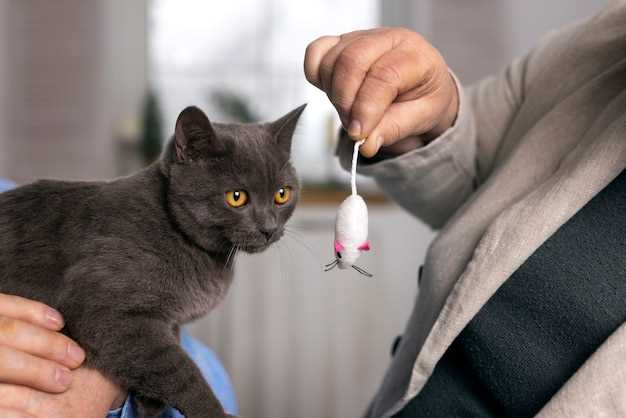
Dr. Leong replayed the footage in the exam room, paused it twice to measure respiratory rate on the screen, and grinned. “That’s textbook response,” she said. Rowdy’s lungs sounded clear through the stethoscope, and his oxygen saturation read 99 %. He left the clinic carrying only a maintenance dose–no emergency injection, no overnight stay, no oxygen crate. Mara uploaded the unedited segment to the clinic’s private client group; within a week it had 1,800 views and a thread of relieved comments from other cat parents who finally recognized the same 3 a.m. sound.
Take-away: Keep the medication on the night-stand, shoot a quick video, and you’ll have date-stamped proof for both your vet and your own peace of mind. Rowdy’s 59-minute swing from panic to purr is repeatable–no special tricks, just the right dose given the moment trouble starts.